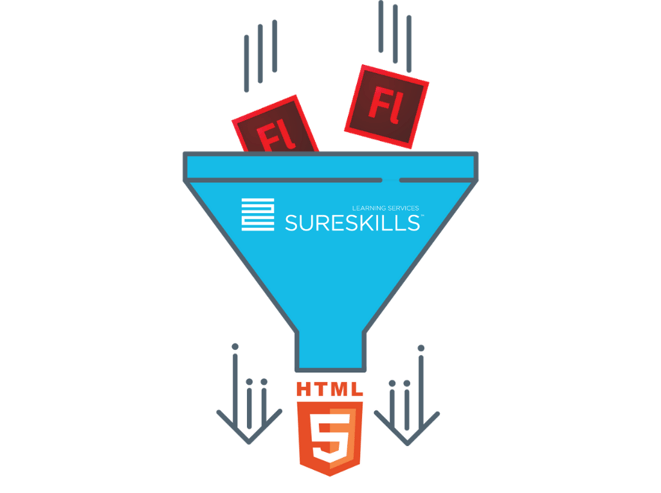
In 2020, Flash will be gone.
This is significant because for the best part of two decades, Adobe Flash has been a major player in the world of eLearning, particularly when it comes to animated and interactive content. Many companies have learning libraries built on the foundation of flash and are looking to 2020 with trepidation.
But the news is not all bad.
While many have seen the death of Flash as an impending nuisance, there are some real benefits to the change that comes into effect next year. Steve Jobs voiced his concerns with Flash in 2010, but contained within his list of problems we some potential solutions. Jobs saw major potential in HTML5 and even encouraged Adobe to pursue this open-web solution to the 3rd party plugin problem.
Fear not. Here are some benefits of moving to HTML5 that you may not have seen coming:
This is a great opportunity to review and refresh your learning content.
Sometimes the obstacle is actually the way forward. This shift in the industry is a great chance to take stock of your learning programme and, if need be, give it a makeover. Recent studies demonstrate the impact of a learning program on the success of your business and as a result, companies are investing more in their learning programmes. This is the perfect time to make sure your learning programme has evolved with the times and is ideally suited to the needs of the modern learner.
Some of your legacy content may be perfectly fine, while some of it may need to be refreshed. You could even decide to update the entire catalogue of learning. Not all content should simply be converted from Flash to HTML5 but there are plenty of experts to guide you along the way as you make some difficult decisions.
Your training will be more suited to your people.
The average smartphone user checks their device 47 times per day and spends nearly three hours on their phones. That number rises to four hours when you factor in tablets. The bottom line here is that mobile devices are where people.
If this is true, then training needs to be accessible on these devices. Refreshing your learning catalogue and delivery methods will help you meet your learners where they are by providing mobile-ready content that lets them learn anytime, anywhere.
You could empower learners to manage their own learning
Flash was created for the PC and has never worked well on mobile devices. That is all about to change with the shift to HTML5. Because it doesn’t require a 3rd party plugin, HTML5 facilitates responsive content on all platforms, including PCs, laptops, tablets, and mobile devices.
Why does this matter? Nearly 50% of the global workforce is now mobile, with a large portion of employees doing most of their work somewhere other than their employers location. If learning content is available anytime, anywhere, learners are much more likely to engage content at a time that suits them or at point of need. This is a huge step forward for the industry and could be the most significant impact of Flash’s demise.
Ultimately, all of these changes will help you facilitate individual and organizational success.
If you’d like to learn more about how to prepare for converting your Adobe Flash content to HTML5, click below for a free consultation with a member of the SureSkills digital learning team.


.png)

